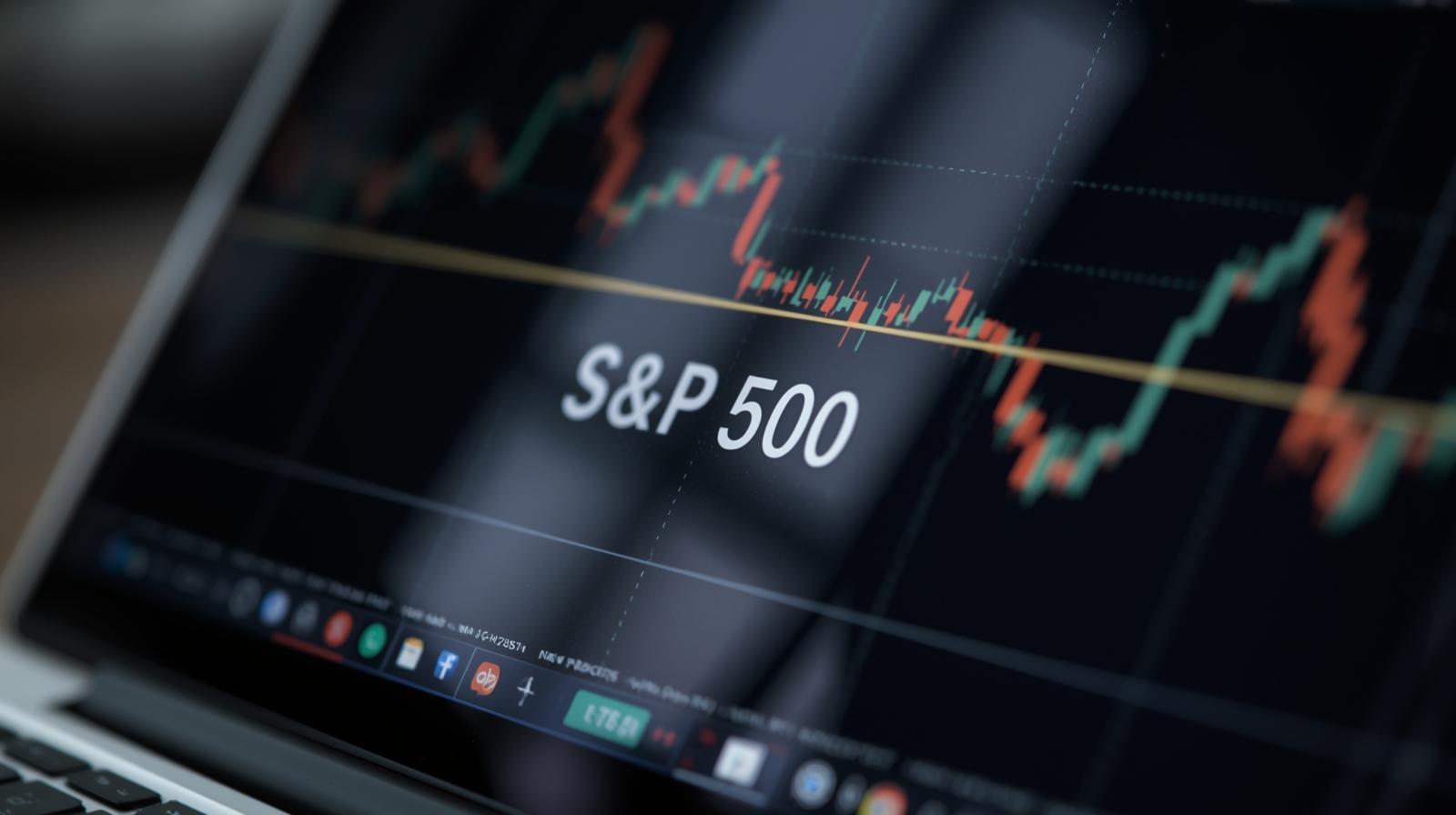
The S&P 500 cuts losses as U.S. markets begin to stabilize amid a week full of corporate earnings, high-profile mergers, and signals from the Federal Reserve regarding interest rates. Investors are closely watching technology stocks, particularly Nvidia, whose earnings report is expected to have a significant impact on market sentiment. Alongside tech performance, major deals in the beverage and software sectors have added momentum to trading activity.
In this article, we break down what’s driving the S&P 500’s partial recovery, why Nvidia and other tech giants matter, the impact of big mergers, and the implications of Federal Reserve signals on market trends.
Nvidia Leads Tech Rally Ahead of Earnings
The technology sector has consistently been a pivotal influence in guiding the S&P 500’s overall trajectory. This week, Nvidia’s stock performance has been under the spotlight. Investors anticipate strong quarterly earnings from the chipmaker, following a rebound in demand for graphics and AI-related products globally.
Several analysts, including those at Wedbush, believe that Nvidia’s revenue growth could see a boost thanks to fresh business opportunities in China following recent regulatory changes. This optimism has driven Nvidia’s stock higher, helping the S&P 500 cut losses despite pressure in other sectors.
Intel has also contributed to the tech rally. However, the company faces uncertainty due to the U.S. government taking a 9.9% stake, which could lead to additional regulations affecting international business. Despite this, both Nvidia and Intel’s performance reflects investor confidence in the semiconductor sector’s long-term growth prospects.
Apple, meanwhile, has hinted at a comprehensive three-year plan to overhaul iPhone hardware and software. Such announcements reinforce positive sentiment among tech investors and contribute to S&P 500’s partial recovery.
Major Deals Shaping Market Dynamics
Market activity this week has been influenced not just by tech earnings, but also by significant corporate acquisitions:
Keurig Dr Pepper and JDE Peet’s Merger
Keurig Dr Pepper has just announced some big news: they’re planning to acquire Dutch coffee giant JDE Peet’s for an impressive $18 billion! After the merger, the company will divide into two separate divisions: one will focus on coffee, while the other will specialize in cold beverages. Analysts are feeling optimistic about this move, believing it could shake up the beverage industry and influence consumer trends. This shift might just lead to a more favorable outlook for stocks in the sector. It’s certainly a trend worth monitoring!
Thoma Bravo Acquires Verint Systems
Private equity firm Thoma Bravo continues to expand its software portfolio by acquiring Verint Systems in a $2 billion deal. This builds on its earlier $10.6 billion acquisition of Boeing’s navigation unit, Jeppesen, reflecting a continued strategy to enhance its footprint in enterprise software.
These transactions are significant because mergers and acquisitions often serve as catalysts for sectoral growth, impacting not just the companies involved, but also related ETFs and broader indices like the S&P 500.
Federal Reserve Signals and Treasury Yields
Investor attention is also fixed on monetary policy. Federal Reserve Chair Jerome Powell’s recent remarks at the Jackson Hole symposium hinted at a possible interest rate cut in September, driven by concerns about the labor market and inflation dynamics.
Treasury yields have continued to rise, reflecting market expectations of future rate adjustments. According to Morgan Stanley, Powell’s comments “lowered the bar for a rate cut in September,” a signal that has helped S&P 500 cut losses as traders anticipate favorable borrowing conditions.
New inflation data coming out later this week should shed more light on the situation. If inflation remains under control, it could reinforce Powell’s approach, boosting market confidence and potentially accelerating the recovery of equity markets.
Why Investors Should Watch S&P 500 Trends Closely
Understanding why the S&P 500 cuts losses is critical for both short-term traders and long-term investors. A combination of tech earnings, corporate mergers, and monetary policy expectations drives volatility in the market. Here are some key takeaways:
Tech Stocks Drive Momentum
Nvidia and Intel’s performance often signals broader sector trends. Strong earnings can lift the index, while setbacks can trigger pullbacks.
High-profile mergers, such as those between Keurig Dr Pepper and Verint Systems, have a significant impact on market sentiment. These acquisitions don’t just affect the stocks of the involved companies; they also shape the confidence of entire sectors and influence the performance of ETFs.
Monetary Policy Remains Crucial
Federal Reserve decisions on interest rates directly affect investor appetite for equities, influencing S&P 500 movements.
Global Events Play a Role: International trade developments, such as China’s regulatory changes impacting Nvidia, can significantly impact market behavior.
By monitoring these factors, investors can position themselves strategically to take advantage of short-term rallies or long-term opportunities.
Looking Ahead: Market Outlook
As the week unfolds, several events will determine whether the S&P 500 continues its recovery:
- Nvidia’s latest quarterly earnings could influence the direction of tech-focused indices.
- Updates on global economic conditions, especially in China, may affect corporate revenues and investor confidence.
- Mergers and acquisitions are likely to keep boosting market liquidity and driving growth in various sectors.
- Fed announcements and inflation data will provide clarity on interest rate policy, shaping the risk-reward balance for investors.
In summary, while volatility is expected, the recent rebound suggests that the market is digesting earnings, acquisitions, and monetary signals in a measured way. Investors should keep a close eye on these developments to understand why the S&P 500 cuts losses and how it can influence their investment strategies.
Conclusion
The partial recovery of the S&P 500 cuts losses scenario highlights the interplay between corporate performance, market transactions, and monetary policy. Tech leaders like Nvidia and Intel, major M&A deals, and signals from the Federal Reserve collectively shape market trends.
Investors should stay informed about these developments. As the market navigates earnings season and evaluates macroeconomic indicators, opportunities for growth and strategic investment are emerging underscoring why careful analysis remains key in 2025.
1 thought on “S&P 500 Recovers: Key Insights from Nvidia’s Earnings, Major Deals, and What to Expect in 2025”